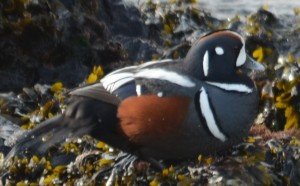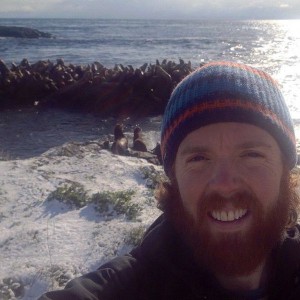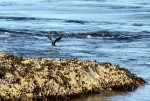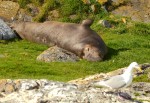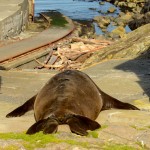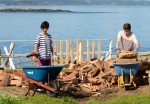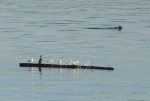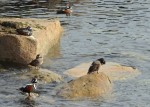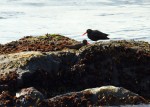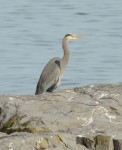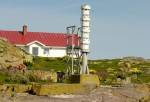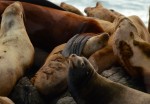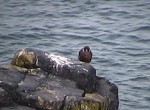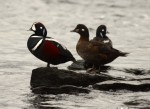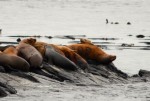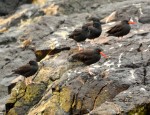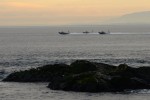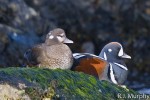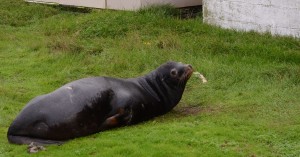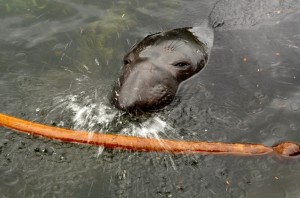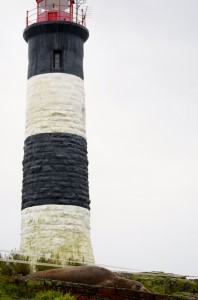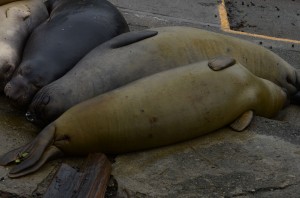The weather was fine today with sunshine from dawn until about four o’clock. Winds were very light and the direction shifted around west, from northwest to southwest. As the barometers drops, rain is forecasted, southeast winds and then improving with only scattered showers by tomorrow afternoon.
The fine weather brought two small sports fishing boats into the Ecological Reserve today, both fishing and speeding inside the Ecological Reserve boundary. My guess is that neither of them were aware of the Eco-Reserve and its protection from speeding and jigging.
There were three, whale watching boats in Reserve today and several others that passed outside of the boundaries. One of the attractions for the whale watchers were Biggs’ Killer Whales, also known as transients. The ‘T”s as they are known to the tour operators were travelling from west to east when I saw them and they passed very close to the seal haul-out on North Rocks before I lost them to view. It looked like four individuals. I saw a single, adult male Killer Whale two days ago, it was just a one-off sighting and I didn’t spot it again in spite of watching for quite a while. That one was also probably also a Biggs, just from the behaviour.
Today was Mega-fauna census day and here are the results.
Bigg’s (Transient) Killer Whales 4
Northern Elephant Seals 12
Harbour Seals 117
California Sea lions 69
Northern Sea lions 21
Canada Geese 24
Harlequin Ducks 9
Pelagic Cormorants 18
Double Crested Cormorants 15
Brandt’s Cormorants 12 (Flying through.)
Great Blue Heron 1
Bald Eagle 2 adults, 3 sub-adults
Killdeer 2 (at least two, difficult to count in the dark)
Black Oystercatchers 10
Black Turnstones 22
Surfbirds 37
Rock Sandpipers 7
Dunlin 11
Pigeon Guillemots 241 (Not a complete count. Had planned to quickly move over and do a north count but unable to count other side due to disruption with speeding boat and subsequent mass pandemonium and movement of birds everywhere.)
Glaucous-winged Gulls 365
Herring Gulls (present earlier in week)
California Gulls (present earlier in week)
Ring-Billed Gulls (present earlier in week)
Peregrine Falcon 1
Northwestern Crow 2
Common Raven 1

The Back Turnstone was one of the many species of shorebirds shown in yesterday’s mystery photo. Easy to distinguish from Surfbird when they are side by side.
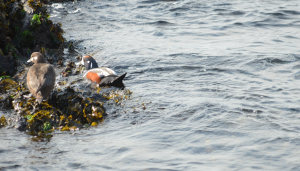
What a difference between drake and hen. These ‘white water’ birds nest in the mountains by rushing streams and rivers.
It was a busy day with lots accomplished. I managed to get the weather station back up and connected to the Internet, thanks to good instructions. I have been on a bit of a wild goose chase, mapping out the nest locations of the Canada Geese. I troubleshot water loss problem (to no avail) and ran both the desalinator and generator. Sweeping the walkways and tidying up wood is ongoing. The census took quite a while and was totally enjoyable. This is such a special place, a real biodiversity hotspot especially underwater. What we see on the surface is like the tip of the biodiversity iceberg or the biomass (food) pyramid. All that biological activity can traced right back to plankton and sunshine that drives it. Sunshine made most of the fresh water today, thanks to the solar panels and desalinator.

